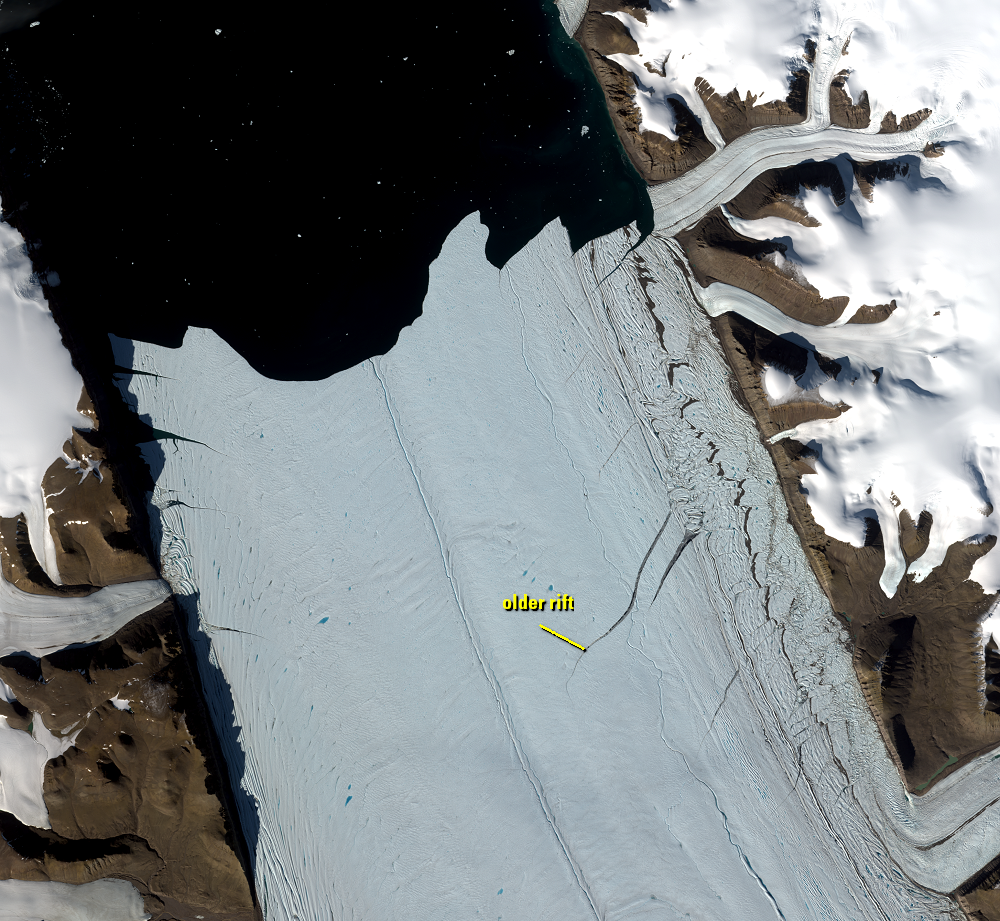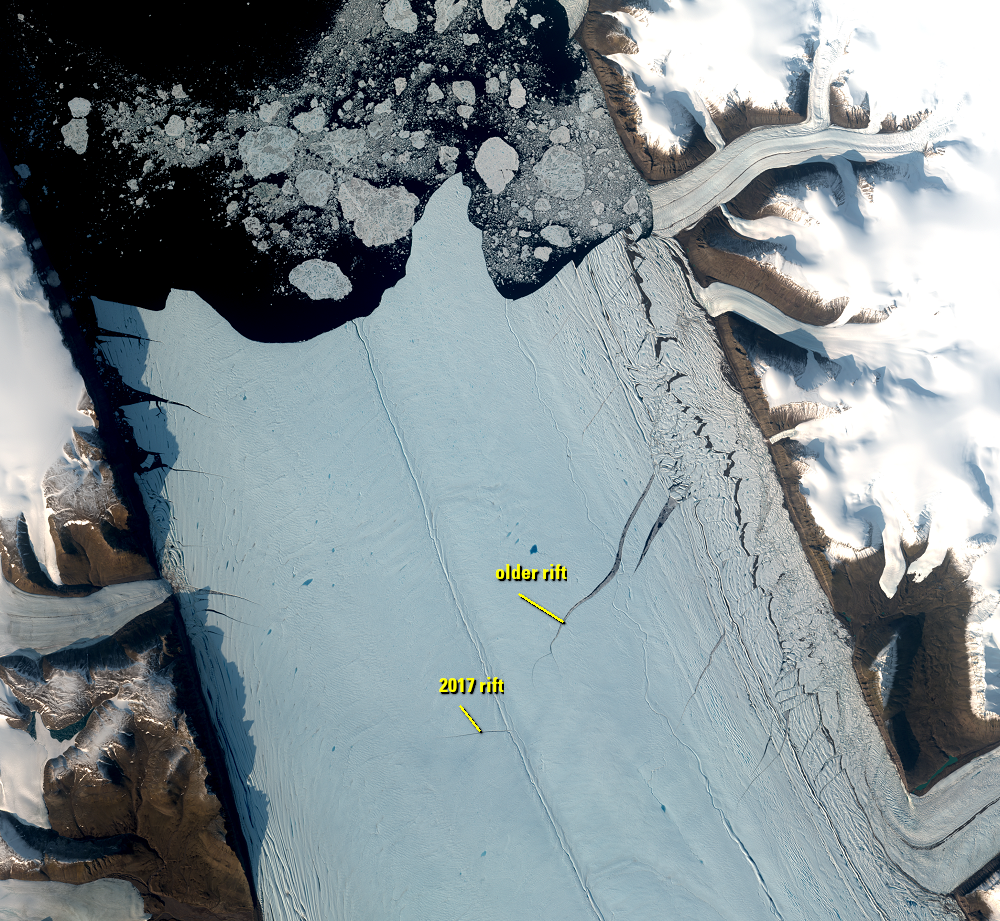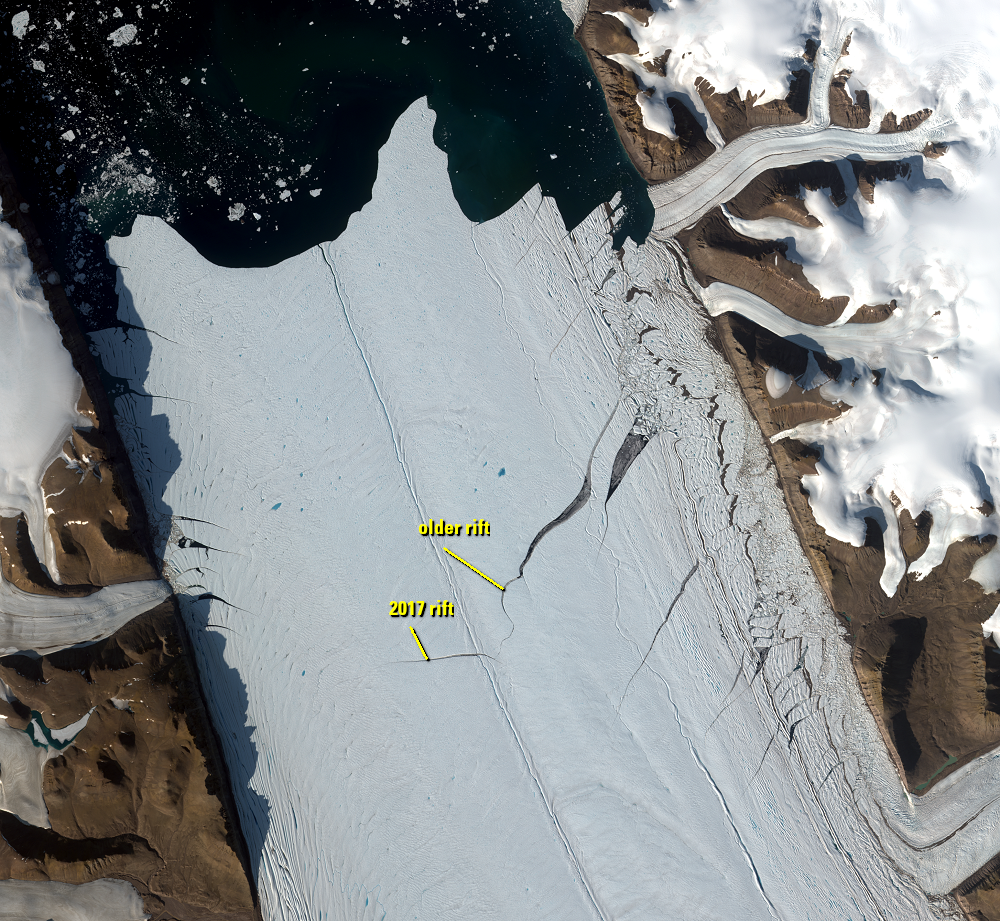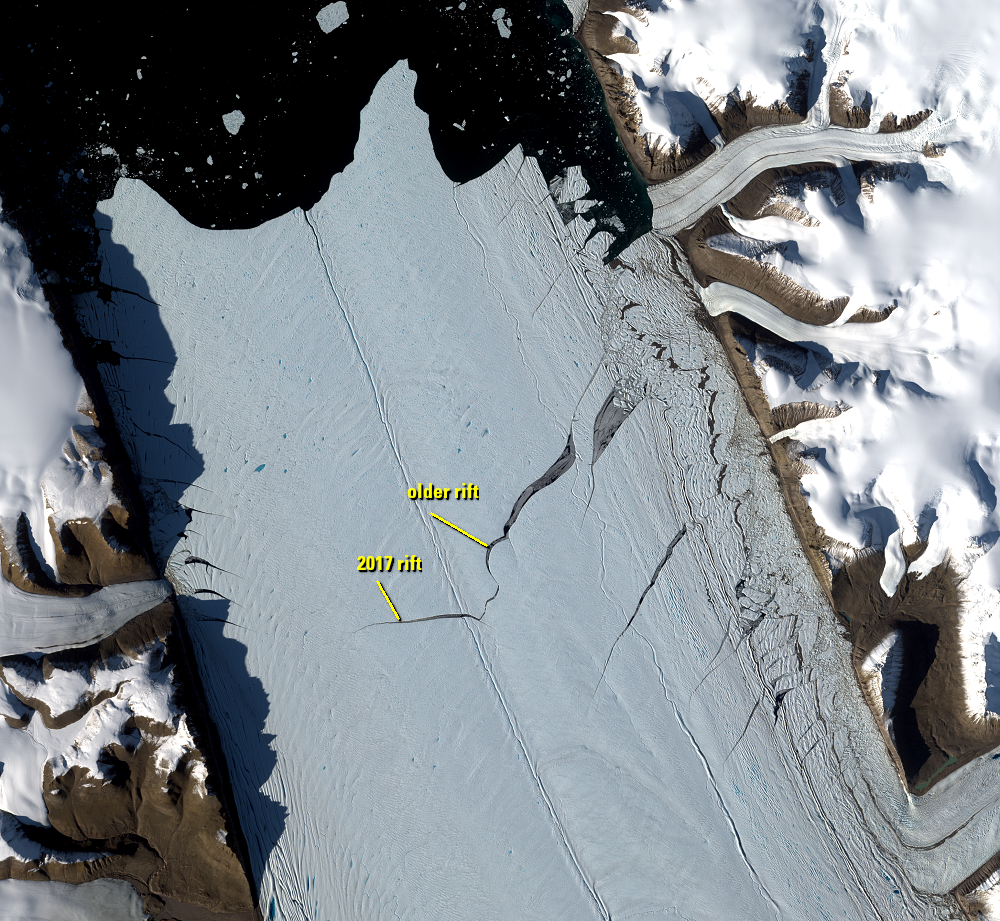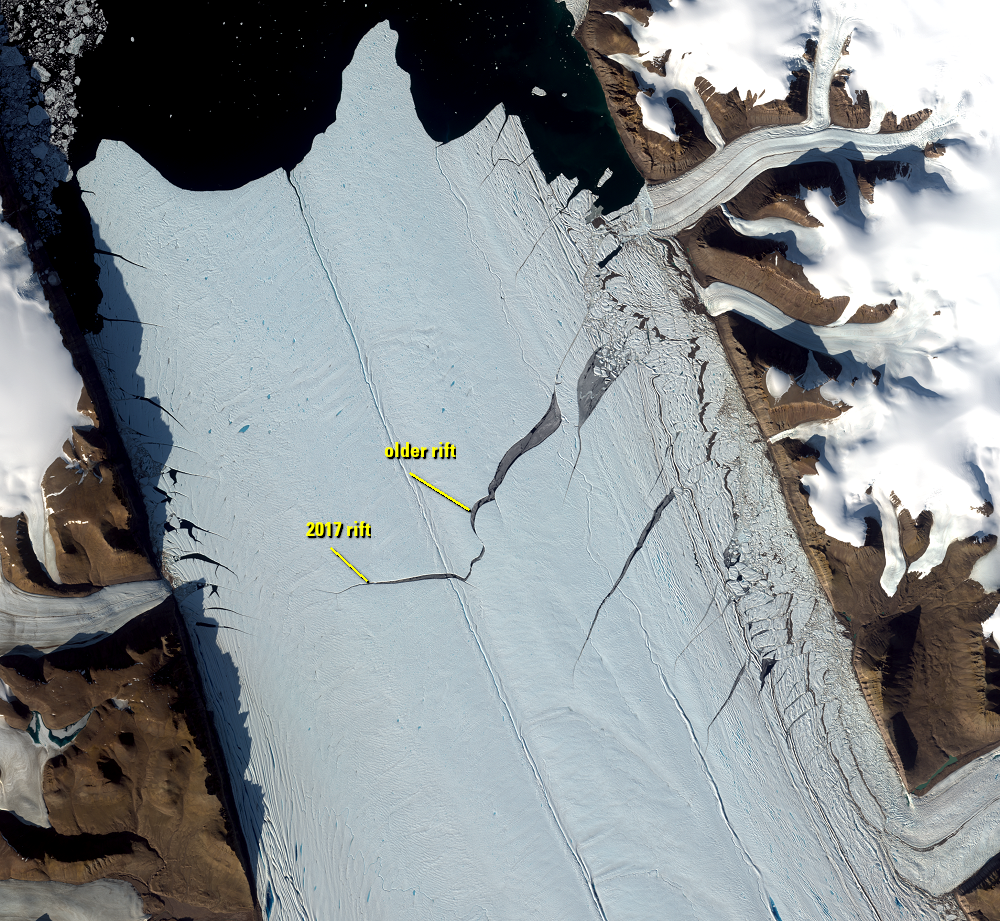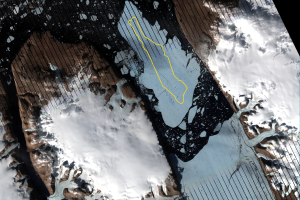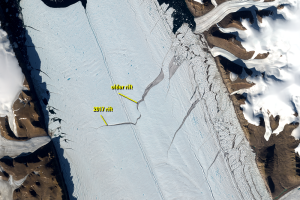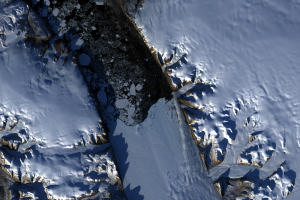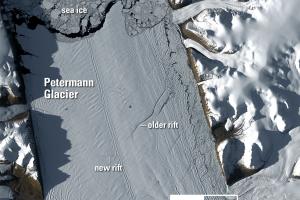
2017 Rift
Earth Resources Observation and Science (EROS) Center - Earthshots
A new rift formed on Petermann Glacier in 2017. An older crack to the right of the new rift also extends toward the glacier’s center. By 2020, this new rift had met up with the older crack. If an iceberg breaks off, it would be Petermann’s third massive iceberg calving since 2010. It also could place the new calving face much farther upstream than the 2010 break.
Close-up images from Sentinel-2 take advantage of its 10-meter spatial resolution to show the new rift in greater detail. Landsat 8 and Sentinel-2 complement each other by imaging glacial movement and possible calving events.
The prominent vertical line could be from deformation of the ice as it flows over the bedrock farther upstream. The irregular topographic surface of the underlying bedrock could have caused the ice to develop this longitudinal crevasse as it moved over bedrock, resulting in a line being drawn the length of the glacier as it flows. Besides the new rift, other bumps and lines extend from this longitudinal line, which are stress fractures from the glacial movement.
Along with becoming longer, notice that the rifts are also moving downstream between 2017 and 2022 as the glacier flows.

